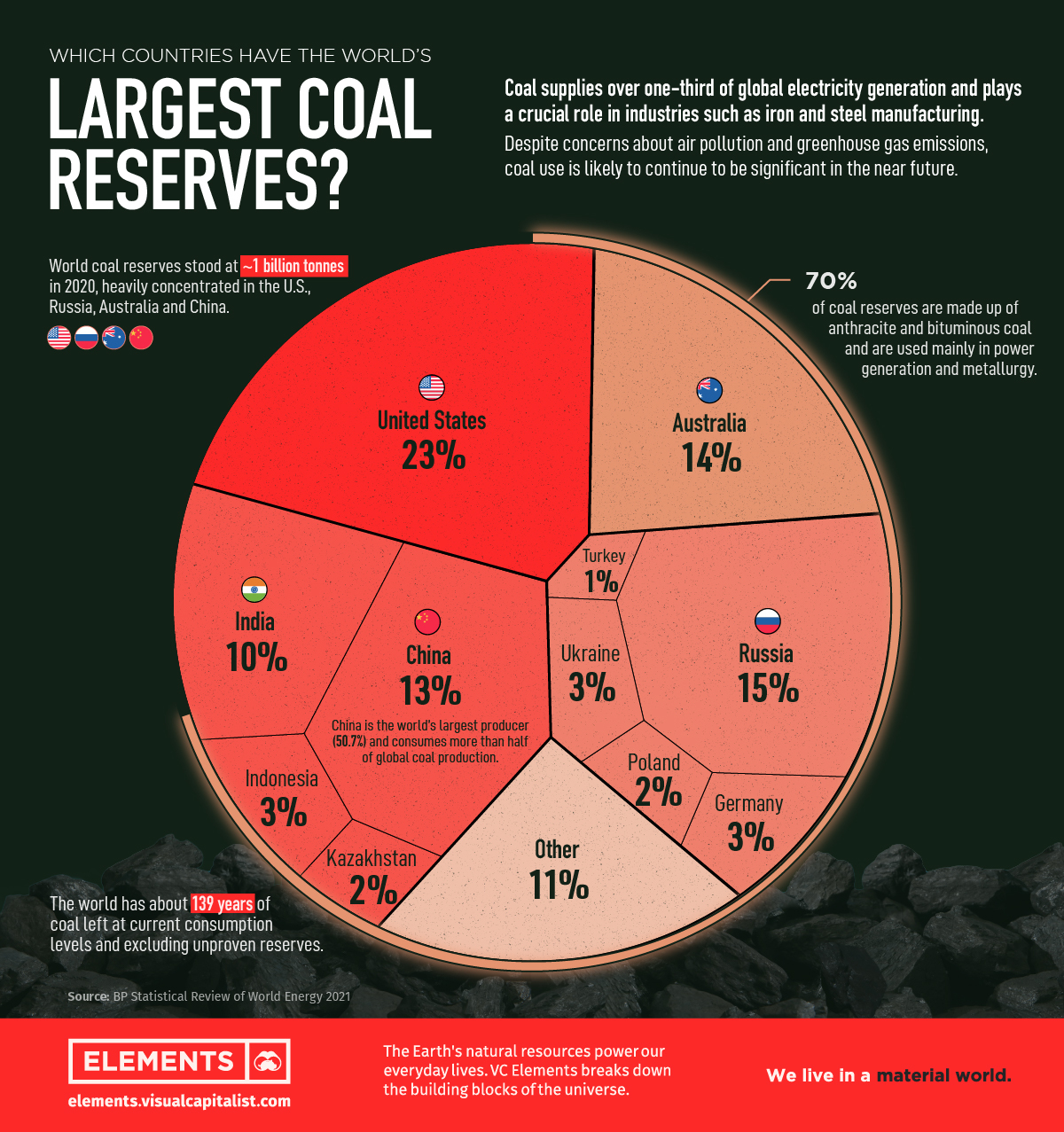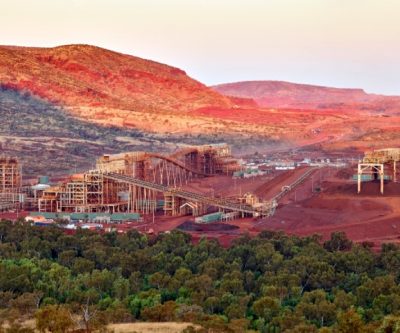Which countries have the world’s largest coal reserves?
- Get link
- X
- Other Apps
Visual Capitalist Elements | September 15, 2021 | 8:58 am Intelligence Australia USA Coal

The Countries With the Largest Coal Reserves
Cheap and abundant coal remains one of the largest sources of energy worldwide, even as governments set out goals to reduce greenhouse gas emissions.
While jurisdictions in Europe and North America have been phasing out coal use in power generation, it has been on the rise in Asia. China and India are scrambling to provide electricity to a growing population and relying on coal power plants to meet demands despite the environmental costs.
This infographic takes a look into the BP Statistical Review of World Energy 2021, and the 11 countries that make up 89% of the coal reserves globally.
Coal Reserves, by Country
While countries need to phase out coal by 2040 to achieve the Paris Agreement goal of limiting global warming to 1.5ºC, consumption in key markets is forecast to increase for the next few years and coal-fired electricity generation could hit a record in 2022, according to the International Energy Agency.
China leads the consumption, buying more than half of the global production and also producing 50% of the world’s coal.
Although the country recently announced a plan to have CO2 emissions peak before 2030 and achieve carbon neutrality before 2060, it is still building coal power projects elsewhere in the world, according to the Coal Finance Tracker by EndCoal. Japan and South Korea are also still strongly financing coal extraction in Southeast Asia.
A shortlist of countries in four continents control ~1 billion tonnes of coal:

To put the numbers into perspective, the world has about 139 years of coal left at current consumption levels and excluding unproven reserves.
What are the Different Types of Coal?
Coal is formed when dead plant matter submerged in swamp environments is subjected to heat and pressure over hundreds of millions of years. Over time, the plant matter turns into a carbon-dense black or brownish-black sedimentary rock – coal.
There are four major types or “ranks” of coal, based on the types and amounts of carbon the coal contains and on the amount of heat energy the coal can produce:
- Anthracite: The highest rank, is a hard, brittle, and black lustrous substance. It contains a high percentage of fixed carbon and is mainly used in stoves, furnaces, and water filtration systems. Formation: 300-360 million years old.
- Bituminous: Middle rank, usually has a high heating (Btu) value and is used in electricity generation and steel-making. Formation: 100-300 million years old.
- Sub-bituminous: Black, not shiny, it has low-to-moderate heating values and is mainly used in electricity generation. Formation: 100 million years old.
- Lignite: Also called brown coal, it has the least concentration of carbon, low heating value, and is mainly used in electricity generation. Formation: 250 million years old.
Anthracite and bituminous coal make up 70% of coal reserves. The other 30% are divided between sub-bituminous and lignite.
The Future of Coal
Coal combustion still accounts for 40% of global CO2 emissions from energy use, despite all the efforts to reduce the share of power generated by fossil fuels.
Meanwhile, the coal mining industry employs about 8 million people and creates revenues of more than US$900 billion a year.
While growth in coal investments is slowing, coal use is unlikely to decline substantially in the medium term.
(This article first appeared in the Visual Capitalist Elements)




Comments
Post a Comment